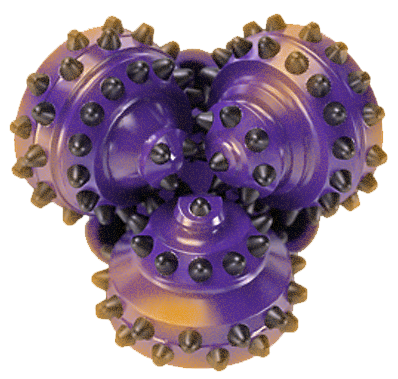Global Agency of Geosciences Experts
Global Agency of Geosciences Experts
This course teaches about acquisition of well data in all siliclastics and carbonate environments, and fractured reservoirs.
Profesionnals with a Scientific background.
Background in Geosciences, petroleum geology or basic Petroleum Engineer knowledge
5 Session






 Geoid Training available
Geoid Training available

– Measurement principles and wellsite acquisition
– Value of high resolution image data
– Image processing & display
– Dip computation and trouble shooting
– Image & dip processing and LQC
– Image description & interpretation steps
– Comparison with core photos and description
– Exercises in bad borehole and tool responses
– Structural dip trends and structural dip removal
– Unconformities
– Normal and growth faults
– Reverse and thrust faults
– Are faults sealing?
– Depositional environments & facies analysis
– Lithofacies from log & image data
– Lithology, grain size variation, need to integrate
– Geometry
– Sedimentary structures
– Paleocurrent directions
– Integration & modelling at the field level
– Sedimentary structures & dune forms
– Complexities in deposition setting & stratigraphic section
– Building reservoir model & populating with data
– Outcrop studies as input to reservoir simulation
– Fluvial settings (various models)
– Braided system lithotypes & sedimentary features
– Meandering system lithotypes & sedimentary features
– Point bar development (predictions)
– Channel models as developed by geostatistics
– Channel models constrained by outcrop analogues
– Correlation and sequence stratigraphic considerations
– Case study from Kalimantan; integrating high resolution seismic attributes with petrophysical data to fine tune a depositional model and site new wells; radically increasing oil recovery in the field.
– Delta classifications and models
– Associated sand geometries
– Image & dip character in distributary fronts & channels
– Case study from South Sumatra basin; developing a play concept to identify most prospective area within structural closure
– Interrelation of coastal & shelf depositional settings
– Facies variation in prograding coastal sequences
– Idealized dip and grain motifs in bar/barrier sands
– Image & dip examples in shelf bar and barrier island sands
– Channel sands in a tidal setting
– Chasing channels by integrating image and seismic data
– Case study: distinguishing channel from bar sands in tidal settings, and its importance on reservoir characteristics
– Use of Nuclear Magnetic Resonance to distinguish sand units
– Using high resolution images to interpret thinly bedded reservoirs
– Environments make a difference
– Parasequences & basin margin architecture
– Aid to correlation & modelling
– Carbonate models and facies in coastal and shelf settings
– Carbonate reefs, and orienting reefal trends
– Porosity enhancement and reduction
– Sequence stratigraphy in carbonate sequences
– Generating reservoir model from outcrop data and 3D seismic
Case study: Kazakhstan Tengiz-Kashagan Trend
Case study: Carbonate rock typing; Corelab approach
– Deepwater sediment depositional models
– Image & dip character in proximal & distal settings
– Orienting channel sands using image & dip data
– Using outcrop work for forward modelling to better interpret seismic, and understand reservoir production behavior
Case study: Improving log interpretation by modelling thin bed effects
– Fracture types; open, healed, vuggy, syneresis
– Natural or induced; borehole breakout & tensile fractures
– Impacts on planning fracture jobs for stimulation
– Fracture orientation
– Case study: Identifying & evaluating producing horizons in fractured basement offshore Vietnam
– Case study: Simulation of a producing fracture system in a Mid-East Giant
– Lithofacies in volcanic settings
– Case study: Using images to resolve reservoir delineation and development issues.







If you require a classroom training or a video training we’ll put you in contact with the best professor teaching in the language of your choice.
© 2022 All rights reserved